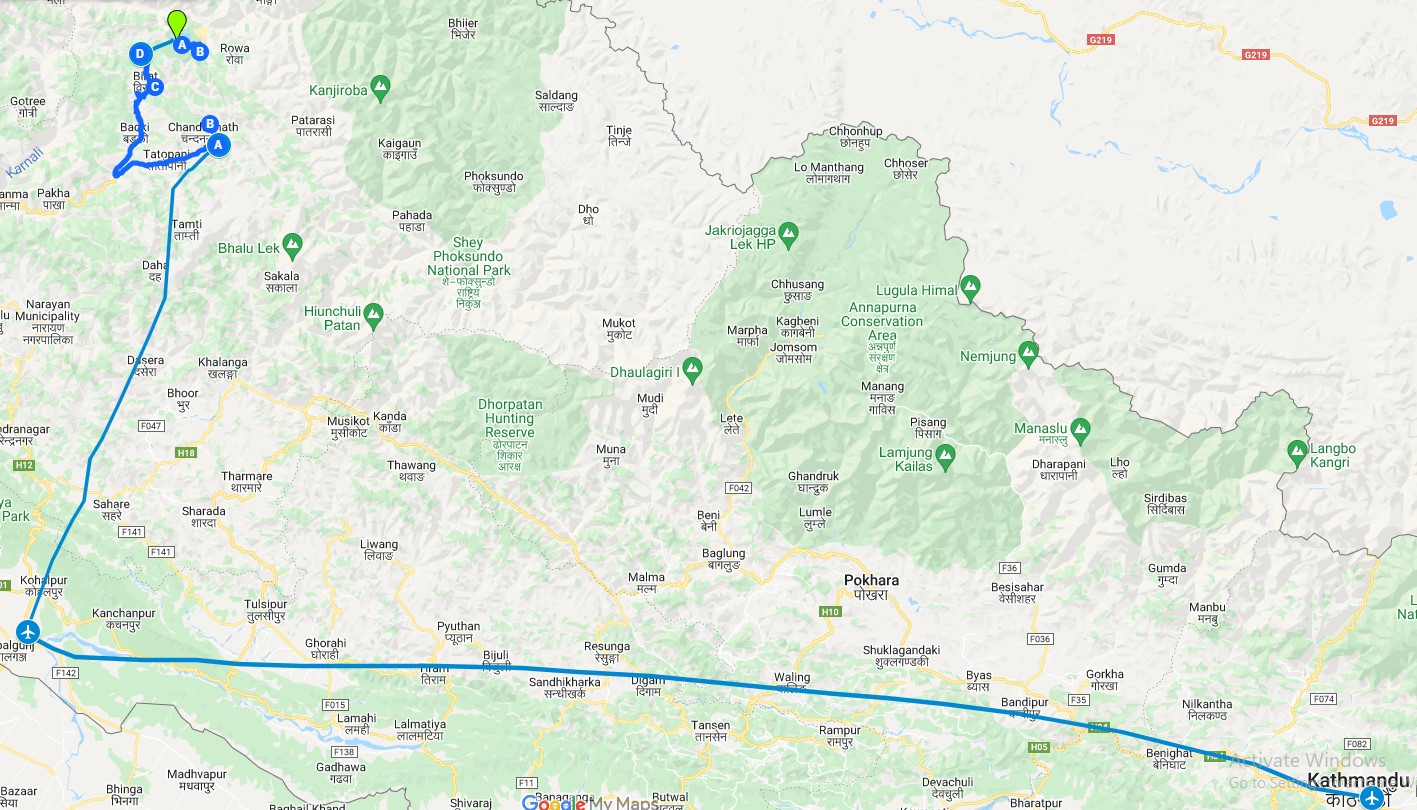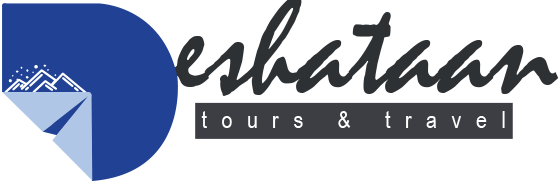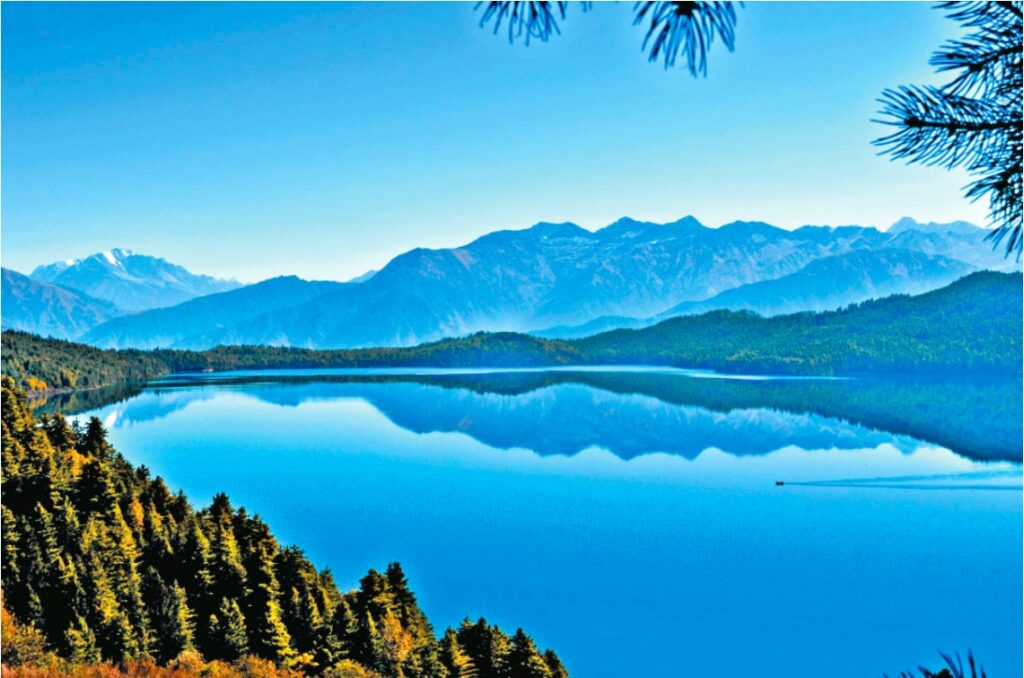
Rara Lake Trek is a once-in-a-lifetime opportunity to walk the remote trails of western Nepal. The 15-day trek begins in Kathmandu with visits to UNESCO World Heritage Sites, followed by flights to Nepalgunj and then to Jumla. From Jumla, you will embark on a journey that promises more solitude and the opportunity to be in the presence of the magnificent lake. The altitude of Rara Lake is 3,010m/ 9,875 feet, making it the highest lake in Nepal, and the Nepalese proudly refer to it as the Queen of Lakes. During your trek, you will also pass through Rara National Park, which is regarded as one of the best in the world and is home to musk deer, Himalayan black bear, leopard, Himalayan goral, and other exotic animals. You will not only see snowcapped mountains, forests, and enchanting lakes on your journey, but you will also get to see the rustic life of the locals who live in this remote land.
Highlights
- Relax your soul by gazing out at Rara Lake.
- Hike to the top of Murma for breathtaking views of the deep blue lake, surrounding forests, and snow-capped peaks.
- Another thrilling experience is to board a boat or ride a horse.
- Himalayan wildlife and birds to see include the Himalayan black bear, red panda, musk deer, Himalayan tahr, and leopards.
- Off the beaten path, walk through dense rhododendron, oak, and pine forests.
- Discover picturesque valleys and remote villages.
Overview
Rara Lake Trekking is a fantastic trip to a small piece of heaven in a remote part of the Midwest. The pristine Rara Lake, known as the Queen of the Lake, is the main attraction of this trek. It is located within the Rara National Park, which covers an area of 106 square kilometers. It is situated at a height of 2,290 meters. The breathtaking views of the lake, forest, hills, and surrounding mountains entice you with their extreme fascination.
There are several entrances to the Rara Lake trek. One option is to fly to Nepalgunj and connect to Jumla before trekking through the Sinja valley. Even for those with limited time, fly directly to Mugu’s Talcha airport and hike to the Lake. Driving to Surkhet and connecting to Jumla or Mugu is another option. Trekking through the Sinja valley, which is the birthplace of the Nepali language, locally known as Khas Bahasa, is highly recommended. The trekking region is mostly dry and remote, but the trail is in good condition. The forest region follows, which is dominated by pine, spruce, and juniper tree lines. The trek’s high point is Chuchemara Hill (4087m), from which you can see stunning views of the lake and the snow-covered Himalayas. This national park’s bio-diversity is undisturbed, and 500 different types of plants and flowers can be found. Aside from that, the cultural aspect of the local people is a fantastic attraction of the trek. Jumla is well-known for its apple production. As you travel through the indigenous communities, you will be able to learn about the different ways of life of the locals, as well as their language, food, and clothing.
Want to know more?
| Viber / WhatsApp | 9864014537 |
| Kathmandu office | 01-4439962, 01-4439963 |
| Price |
Trip Itinerary Brief
| Day | Highlights | Maximum Altitude | Walking/Hiking |
| Day 1 | Arrival in Kathmandu | 1,350m/4,429ft | |
| Day 2 | Kathmandu sightseeing: World Heritage Sites | 1,350m/4,429ft | |
| Day 3 | Fly or Drive from Kathmandu to Nepalgunj | 150m/492ft | |
| Day 4 | Fly or Drive from Nepalgunj to Jumla | 2,540m/8,334ft | |
| Day 5 | Trek from Jumla to Chere Chaur | 3,055m/10,023ft | 4-5 hrs |
| Day 6 | Chere Chaur to Chalachaur | 2,980m/9,777ft | 5-6 hrs |
| Day 7 | Chalachaur to Sinja Valley | 2,490m/8,170ft | 5-6 hrs |
| Day 8 | Sinja to Ghorosingha | 3,050m/10,007ft | 5-6 hrs |
| Day 9 | Ghorosingha to Rara Lake | 3,010m/9,876ft | 5 hrs |
| Day 10 | Explore Rara Lake | 3,010m/9,876ft | |
| Day 11 | Rara Lake to Pina | 2,440m/8,006ft | 5-6 hrs |
| Day 12 | Pina to Bumra | 2,850m/9,351ft | 5-6 hrs |
| Day 13 | Trek ends: Bumra to Jumla | 2,540m/8,334ft | 6 hrs |
| Day 14 | Fly to Nepalgunj, fly to Kathmandu | 1,350m/4,429ft | |
| Day 15 | Final departure | – |
Detailed Itinerary
DAY 1: Arrival in Kathmandu
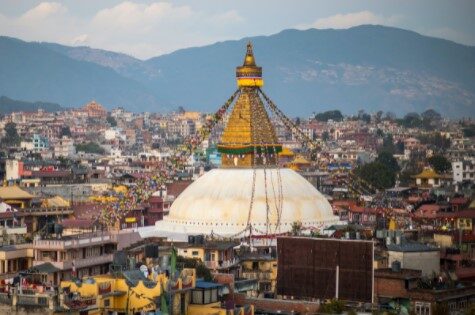
When we arrive at Kathmandu’s Tribhuvan International Airport (TIA), we will be greeted by a representative from Deshatan Travels and Tours, who will take us to our hotel. After checking in, we either rest or go to the Deshatan Travels and Tours office. In the evening, Deshatan will host a welcome dinner that will introduce you to Nepalese cuisine.
DAY 2: Kathmandu sightseeing: World Heritage Sites

After breakfast, we begin our sightseeing tour of Kathmandu by visiting UNESCO World Heritage Sites. Kathmandu Durbar Square showcases the best Nepalese art and architecture. The architecture is typical of Nepal’s Malla dynasty, which ruled from the 12th to the 18th centuries. Because of the large monkey population that lives in the area, Swayambhunath Temple is known as the Monkey Temple by foreign visitors. Pashupatinath Temple is one of Lord Shiva’s main temples and is located on the banks of the Bagmati River. The Bauddhanath Stupa, located on the ancient trade route to Tibet, is one of the largest stupas in South Asia.
DAY 3: Fly from Kathmandu to Nepalgunj

We take an hour-long flight from Kathmandu to Nepalgunj, which is located in Western Nepal, after our short excursion in Kathmandu. Nepalgunj, a town near the Nepal-India border, serves as the entry point to Simikot and Humla. The town itself is an interesting Terai town that exemplifies Nepal’s diverse culture. We visit the local market, mini-zoo, and nearby villages in Nepalgunj. In Nepalgunj, spend the night.
Day 4: Fly from Nepalgunj to Jumla
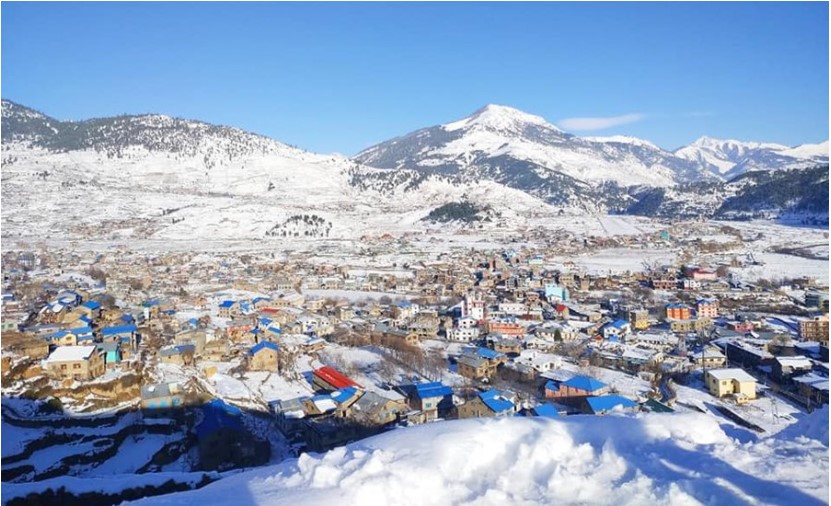
We leave the Terai plains of Nepalgunj after an early breakfast and fly to the hilly landscape of Jumla, one of Nepal’s least accessible districts. Jumla, located in the foothills of the Sistine Himalaya, is also the starting point for trekkers looking to explore Nepal’s remote Karnali region. In Jumla, spend the night.
DAY 5: Trek from Jumla to Chere Chaur

Today marks the start of our journey. We leave Jumla and ascend the Jugad Khola to Chere Chaur. On the way, we pass through Khalanga Bazzar, a small market for the surrounding villages. Before arriving at our destination, we pass through a couple of villages and a temple. Spend the night in Chere Chaur.
Day 6: Chere Chaur to Chalachaur
We take the western trail from Chere Chaur and gradually ascend until we reach the Jaljala pass (3580m). We cross the pass and continue on a relatively straight path until we reach Jaljala Chaur. From here, we climb a steep trail and enter the Rara Lake Circuit before reaching Chalachaur. Overnight in Chalachaur.
Day 7: Chalachaur to Sinja Valley
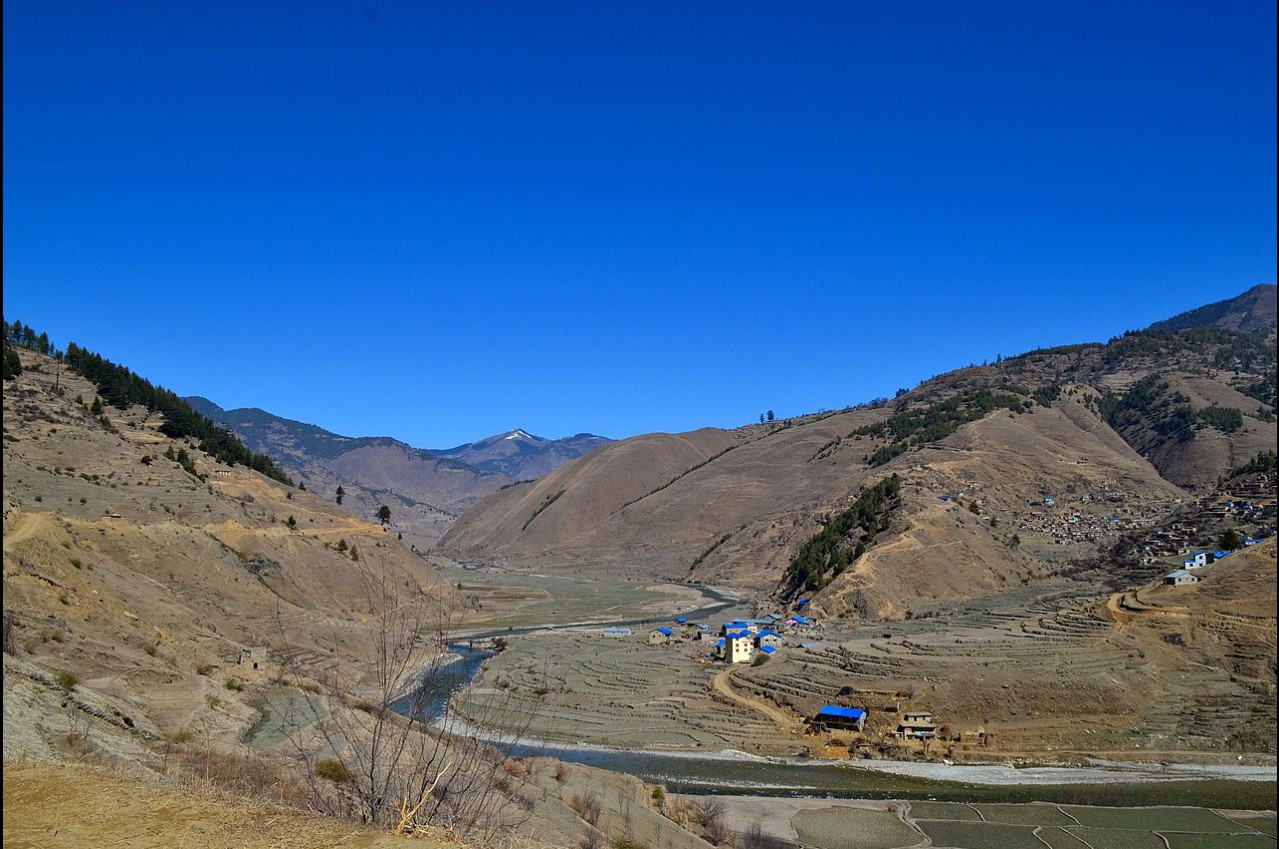
Sinja Valley is a steep ascent. We pass through several villages and walk along the Jaljala Khola on the way (stream). Sinja Valley has a significant historical significance in Nepal. The valley is home to the ancient capital city of the Khasa Kingdom, which ruled this region between the 12th and 14th centuries. During excavations led by Cambridge University’s Department of Archaeology, palaces, temples, and the ancient remains of a settlement were discovered. In Sinja Valley, spend the night.
Day 8: Sinja to Ghorosingha
We leave Sinja on an uphill trail that runs alongside the Hima River. From the village, we climb a steep trail for a while before descending to Laha Village on a relatively easy trail. It is a steep climb from Laha to Ghorosingha along the Ghatte Khola (stream). In Ghorosingha, spend the night.
Day 9: Ghorosingha to Rara Lake
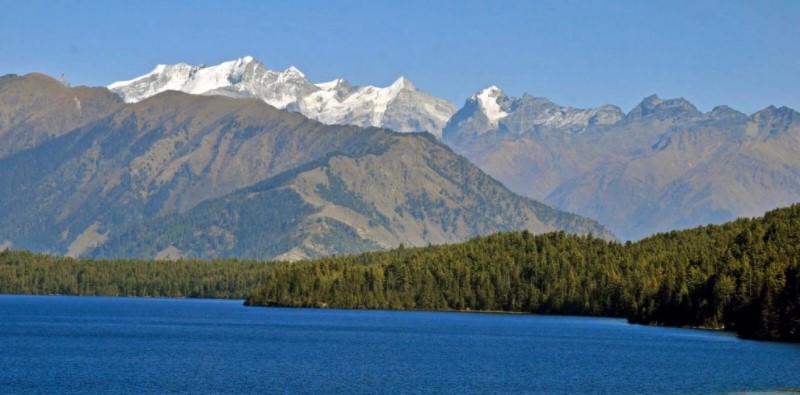
After breakfast, we begin our steep ascent. Our path follows the Chuchhemara Danda, from which we can see the Himalayan panorama, the vast and tranquil Rara Lake, and the lush vegetation of the Rara National Park. We pass through Khatyar Khola Camp and a few villages, including Murma, on our way to Rara Lake. The ascent becomes a little easier after Mama. We keep walking towards Chapri village, which is home to the Rara National Park Headquarters. Overnight at Rara Lake.
Day 10: Explore Rara Lake
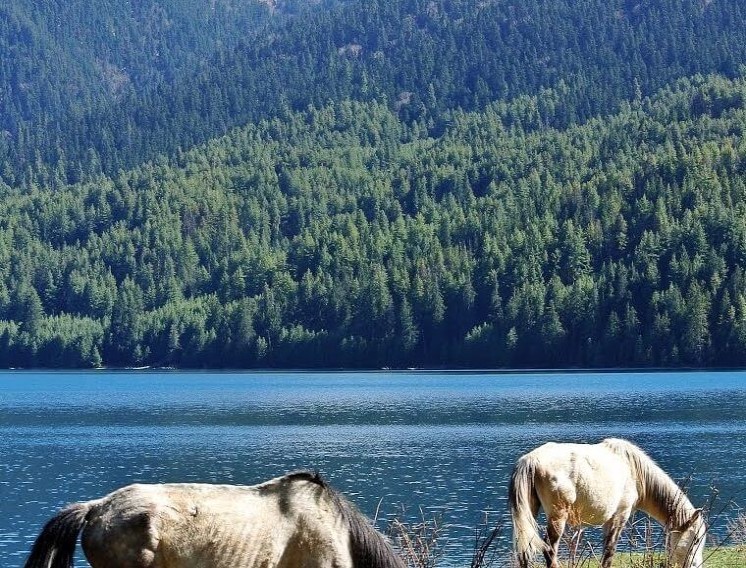
Rara Lake is the largest freshwater lake in Nepal. After breakfast, we explore the azure waters of the massive lake, also known as Mahendra Taal (Lake) after late King Mahendra. We get to admire the picturesque setting of the lake while boating and discover a variety of fish. Chuchemara Peak is located on the southern side of Rara Lake, while Ruma Kand and Malika Kand peaks frame its northern area. Rara Lake is where you’ll spend the night.
Day 11: Rara Lake to Pina
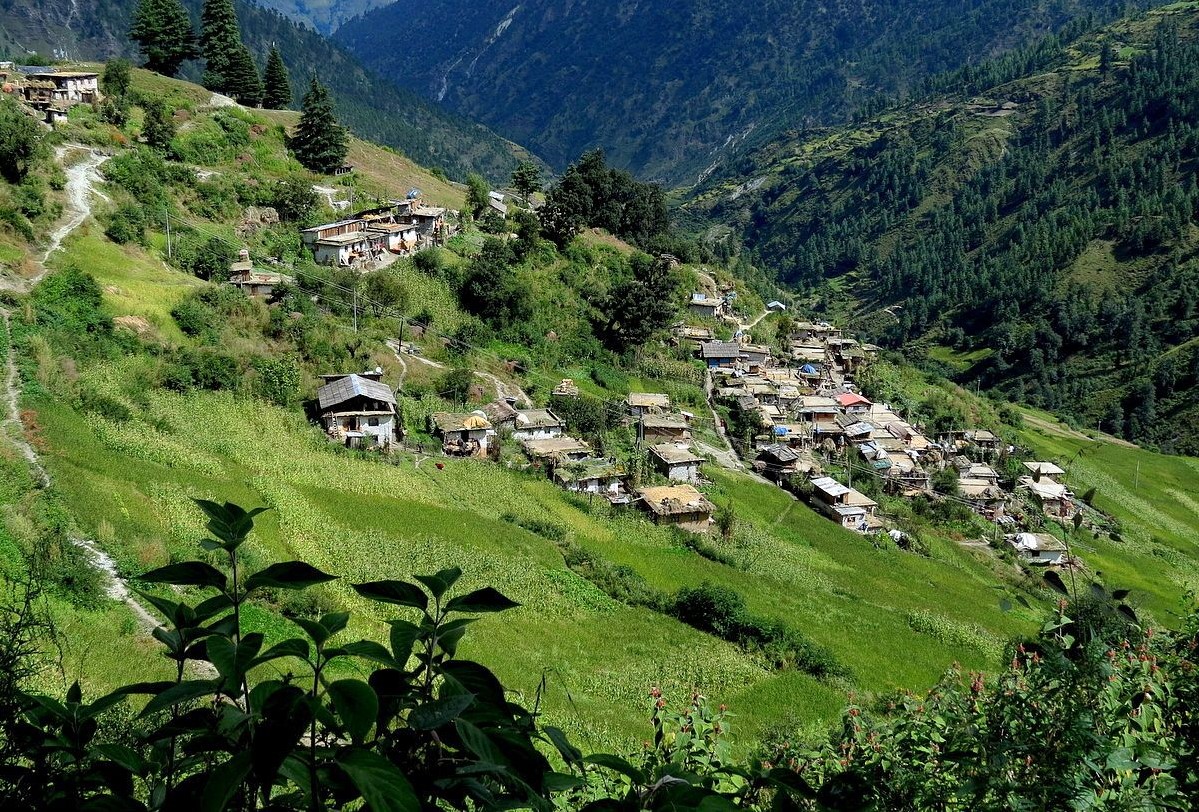
Our trail from Rara Lake is easy, and we walk on a relatively straight path until we reach Gamgadhi, the headquarters of Nepal’s remote Mugu District. We descend from Gamgadhi on a steep trail to Pina Village, where we spend the night.
Day 12: Pina to Bumra
We descend from Pina and cross the 3480-meter-high Ghurchi Lagna pass. We continue downhill and pass through a few villages before arriving in Bumra. The village of Bumra is also known as Nauri Ghat.
Day 13: Trek ends: Bumra to Jumla

We walk downhill after crossing two suspension bridges above the Hima River. We arrive at a hot spring after a few hours of walking to relieve our aching bodies with a dip. We cross Danphe Lagna pass at 3691 m not long after leaving the hot spring. We return to Jumla via the same route we took a few days ago after arriving in Cherechaur. In Jumla, spend the night.
Day 14: Fly to Nepalgunj, fly to Kathmandu
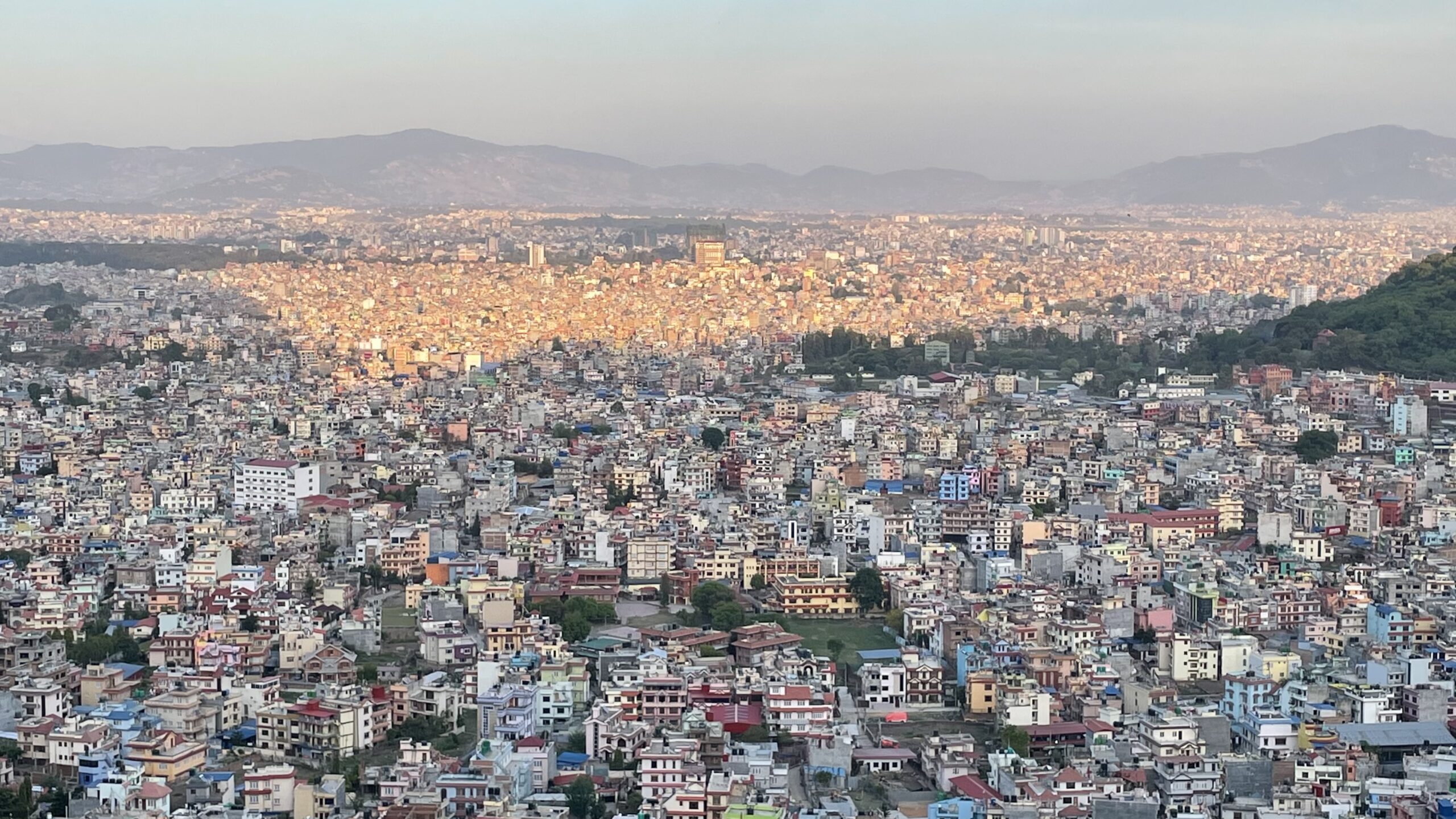
We take the first available flight from Jumla to Nepalgunj. After arriving in Nepalgunj, we fly to Kathmandu, Nepal’s capital city. We freshen up and rest after arriving in Kathmandu. Deshatan Travels and Tours will host a farewell dinner in the evening to celebrate the successful completion of the Rara Lake trek. In Kathmandu, spend the night.
Day 15: Final departure
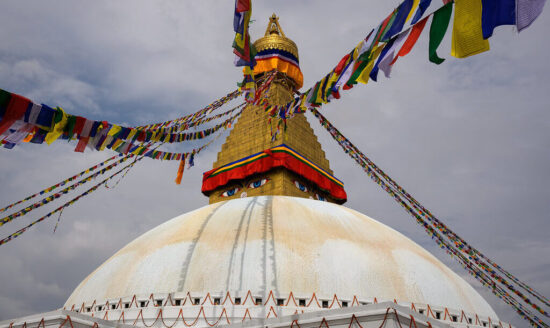
Our Deshatan Travels and Tours representative will accompany you to Tribhuvan International Airport for your connecting flight home approximately 3 hours ahead of schedule. Have a safe flight back to your home!
Included
- Accommodation in Standard Hotels on Twin Sharing Basis
- Equipment
- Domestic Flights
- Local Guide & Support Staff
- All Private Ground Transportation Including Airport Transfers
- Meals in the Mountain
- Small-Group Adventure
- Guaranteed Departures
- Lifetime Deposit
- No Booking Fee
Rara lake Trek Difficulty
Rara Lake Trekking appears to be simple and appropriate for hikers of all skill levels. This trek is easily completed by beginners and intermediate trekkers with a basic level of fitness. You might be able to hike for 4 to 6 hours through steep terrain with a light day pack. As a result, no previous trekking or technical experience is required for this trek.
Best Time for Rara lake Trek
Hiking and trekking are two of the world’s most popular recreational activities. They can be wonderful recreational pursuits if they are secure and successful. As a result, we must be very clear about when we should go before engaging in these activities.
Hiking in Nepal can be done at any time of year. Autumn and spring are the best times to go trekking in Nepal. Each season has its distinct characteristics. The Autumn season lasts from September to November, while the Spring season lasts from March to May. These two seasons are ideal for visiting almost all of Nepal’s regions.
Rara Lake Trekking is best done in the spring (September-October) and autumn (November-December) (March-May). Throughout this time, the weather will be pleasant, and you will be treated to spectacular views of the Himalayas reflected in the lake. Not to mention, the area is blanketed in blossoming multicolored Rhododendrons during the spring season, adding a distinct and unparalleled beauty to the area surrounding the lake.
Map
